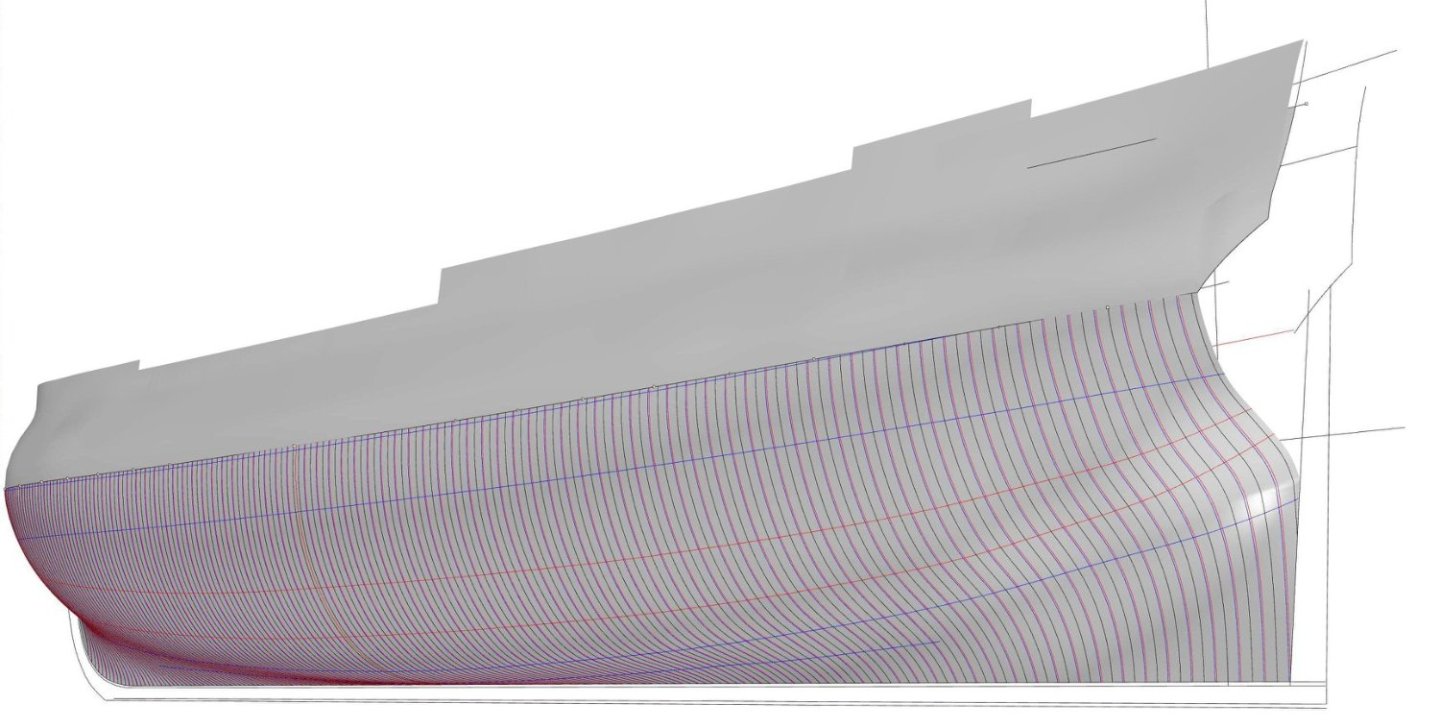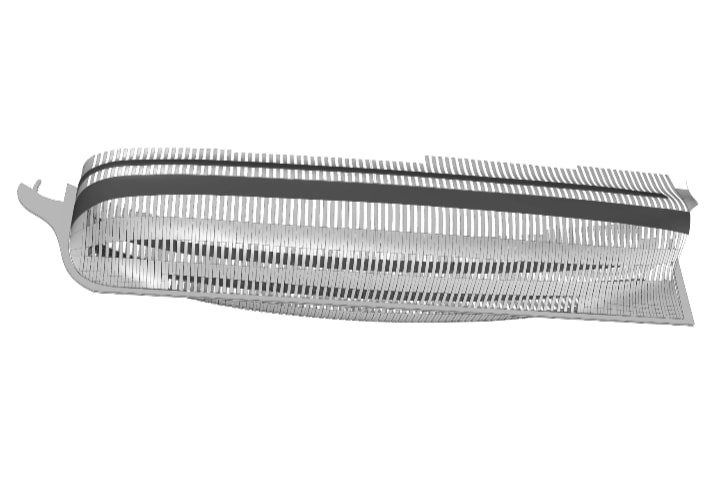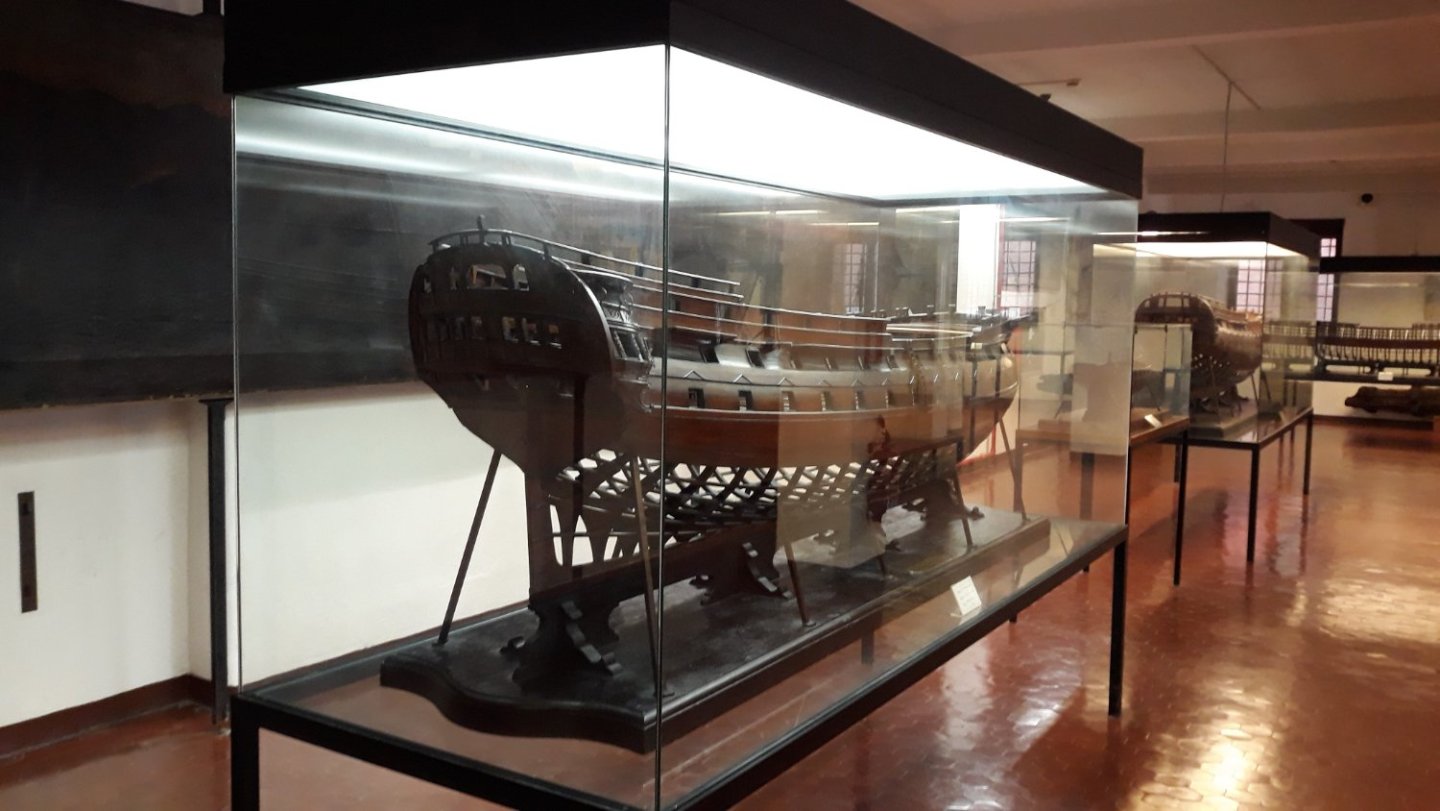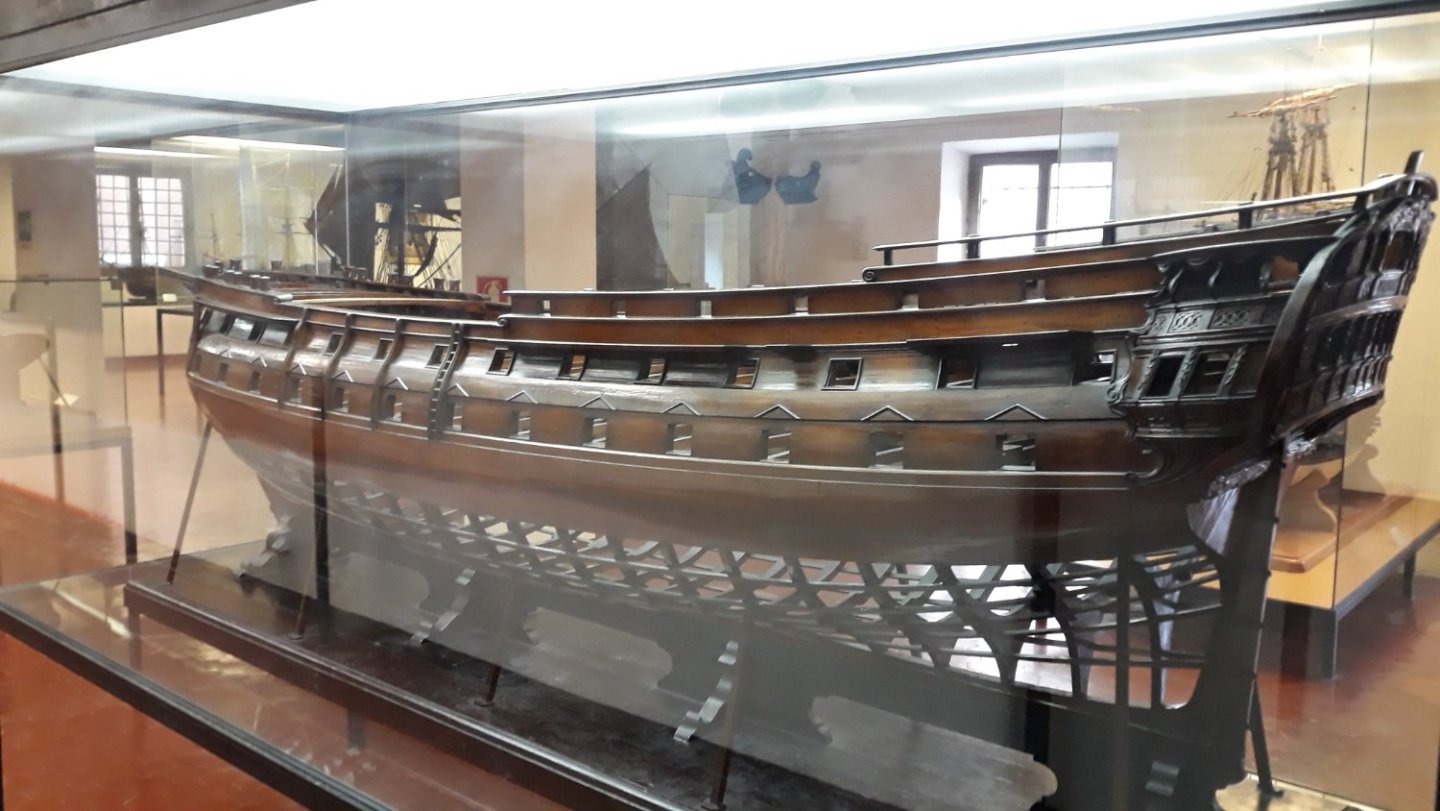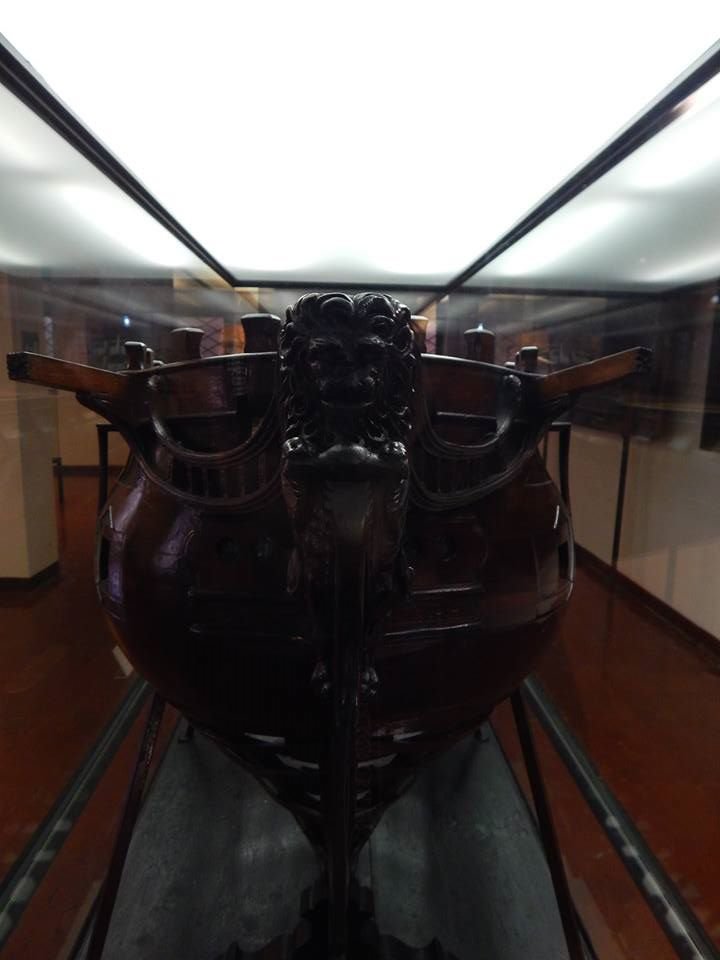-
Posts
108 -
Joined
-
Last visited
Content Type
Profiles
Forums
Gallery
Events
Everything posted by MICHELE PADOAN
-
The VOLAGE forward section and aft section, scale 1/24. Longboat of 1693, monograph by Jean-Claude Lemineur. "The longboat is a small military bastion at the base of the Royal Navy's classification. A Dunkirk specialty, the Volage is operated in 1693 by René Levasseur at a time when France launched a major racing war against English commerce. Her field of action is essentially the English Channel, and her fairly specific masting and equipment are well adapted to it.Sixty-three ½ feet long and 16 feet wide, she is armed with ten 4-pound guns. Her equipment consists of fifty men and two officers who share a relatively small space, this is limited to the surface of the battery deck and the quarterdeck; there is no false deck. One of its main features is a deck offset aft to give the commander's room the normal height below the quarterdeck, all including the height of the dead works. The role of the longboat in naval armies is mainly that of the transmission of orders. It is also used for escorting merchant convoys and coastal surveillance. Its qualities are highly valued by privateers. The existence of the longboat will end with the reign of Louis XIV. During the 18th century the size of the boat will increase, it will take the name of corvette, and the caliber of artillery will increase from 4 to 6 pounds around 1750." Regolazione del cantiere, dritta di poppa e ruota di prua.
-
This is the figurehead that will go on the model of the Venetian 1780-class single-ribbed vessel. I wanted to reproduce or at least try to reproduce to the smallest detail the original figurehead of the vessel exhibited at the Naval Museum in Venice, a somewhat stylized lion and a different of the classic feline-looking rampant lion, classic of the Serenissima. The figurehead is executed in redheart wood, red like the lion of the Serenissima. The dimensions are in 1/44 scale and were calculated by photogrammetry done by my friend engineer Luigi Ombrato, who reproduced the exact shape, while for all the details I used about fifty photos taken a short time ago at the museum to add as much detail as possible.
-
At the Naval Museum in Venice, we were able to observe two models of unknown provenance, lacking any documentation identified as Venetian Vessel Models of 1st rank from the 18th century. Luigi is also an engineer and as a technician he reports what he sees. With photogrammetry it was possible to report the true reconstruction of that model and the reconstruction drawings will be based on that. 10000000_733728533912107_6663574018134148699_n.mp4
-
Per la prima volta mi ritrovo coinvolto nella ricerca storica (sebbene il lavoro di ricerca e sviluppo del piano sia quasi interamente di Luigi Ombrato) di una nave veneziana. Fu l'idea di realizzare una nave italiana in contrasto con la miriade di navi francesi e inglesi che alla fine mi convinse. Poi considerando la possibilità di fare anche un vaso veneziano poiché anch'io veneto essendo nato a Chioggia, tutti i miei timori sono svaniti. Per scelta modellistica ho deciso di rimanere entro gli anni '80 del Settecento poiché, a differenza di francesi e inglesi, nelle costruzioni veneziane si usava ancora il sistema ad una costola costruita con la tecnica dei partisoni arrivando a utilizzare ben nove pezzi per costruire un unico rib, una realizzazione a livello modellistico più complicata del doppio rib ma tipica delle nostre navi. Lo studio è iniziato esaminando attraverso rilievi due modelli appartenenti alla collezione del Museo della Marina di Venezia; dopo attenti confronti si è stabilito che questi modelli appartengono alla classe che prende il nome di 1780. La scala del modello preso in esame è 1:22; rispetto ai disegni della classe 1780 conservati nell'Archivio di Trieste, la scala della tavola della classe 1780 è 1:44, il doppio del modello in questione. For the first time I find myself involved in the historical research (although the research and development work on the plan is almost entirely by Luigi Ombrato) of a Venetian ship. It was the idea of making an Italian ship in contrast to the myriad of French and English ships that finally convinced me. Then considering the possibility of also making a Venetian vase since I too was born in Chioggia, all my fears vanished. For modeling choice I decided to stay within the eighties of the eighteenth century because, unlike the French and English, in Venetian constructions the one-rib system was still used, built with the technique of partisons, coming to use nine pieces to build a single rib, a more complicated modeling level realization than the double rib but typical of our ships. The study began by examining through reliefs two models belonging to the collection of the Museo della Marina di Venezia; after careful comparisons it has been established that these models belong to the class that takes the name of 1780. The scale of the model examined is 1:22; compared to the 1780 class drawings preserved in the Trieste Archive, the scale of the 1780 class panel is 1:44, double the model in question. Below are the two models on display at the Naval Museum in Venice.
-
Good evening, regarding the artillery of the Commerce de Marseille, only the starboard side will have cannons deployed. Only one full 36-lb cannon on the first deck, the other 15 just the shafts. Seventeen 24-lb guns on the second deck, 17 12-lb guns on the bridge deck, and 9 8-lb guns on the castle and quarterdeck.
-
Below are all the pictures showing step by step how I proceed to build the subdivision. As the various baglietti are assembled, the paiolates, bulkheads and their respective uprights are placed and nailed together to form the various stores in the hold. Each part is thought out and constructed in such a way as to make everything as visible as possible. Everything is then treated with shellac and bitumen.
About us
Modelshipworld - Advancing Ship Modeling through Research
SSL Secured
Your security is important for us so this Website is SSL-Secured
NRG Mailing Address
Nautical Research Guild
237 South Lincoln Street
Westmont IL, 60559-1917
Model Ship World ® and the MSW logo are Registered Trademarks, and belong to the Nautical Research Guild (United States Patent and Trademark Office: No. 6,929,264 & No. 6,929,274, registered Dec. 20, 2022)
Helpful Links
About the NRG
If you enjoy building ship models that are historically accurate as well as beautiful, then The Nautical Research Guild (NRG) is just right for you.
The Guild is a non-profit educational organization whose mission is to “Advance Ship Modeling Through Research”. We provide support to our members in their efforts to raise the quality of their model ships.
The Nautical Research Guild has published our world-renowned quarterly magazine, The Nautical Research Journal, since 1955. The pages of the Journal are full of articles by accomplished ship modelers who show you how they create those exquisite details on their models, and by maritime historians who show you the correct details to build. The Journal is available in both print and digital editions. Go to the NRG web site (www.thenrg.org) to download a complimentary digital copy of the Journal. The NRG also publishes plan sets, books and compilations of back issues of the Journal and the former Ships in Scale and Model Ship Builder magazines.




